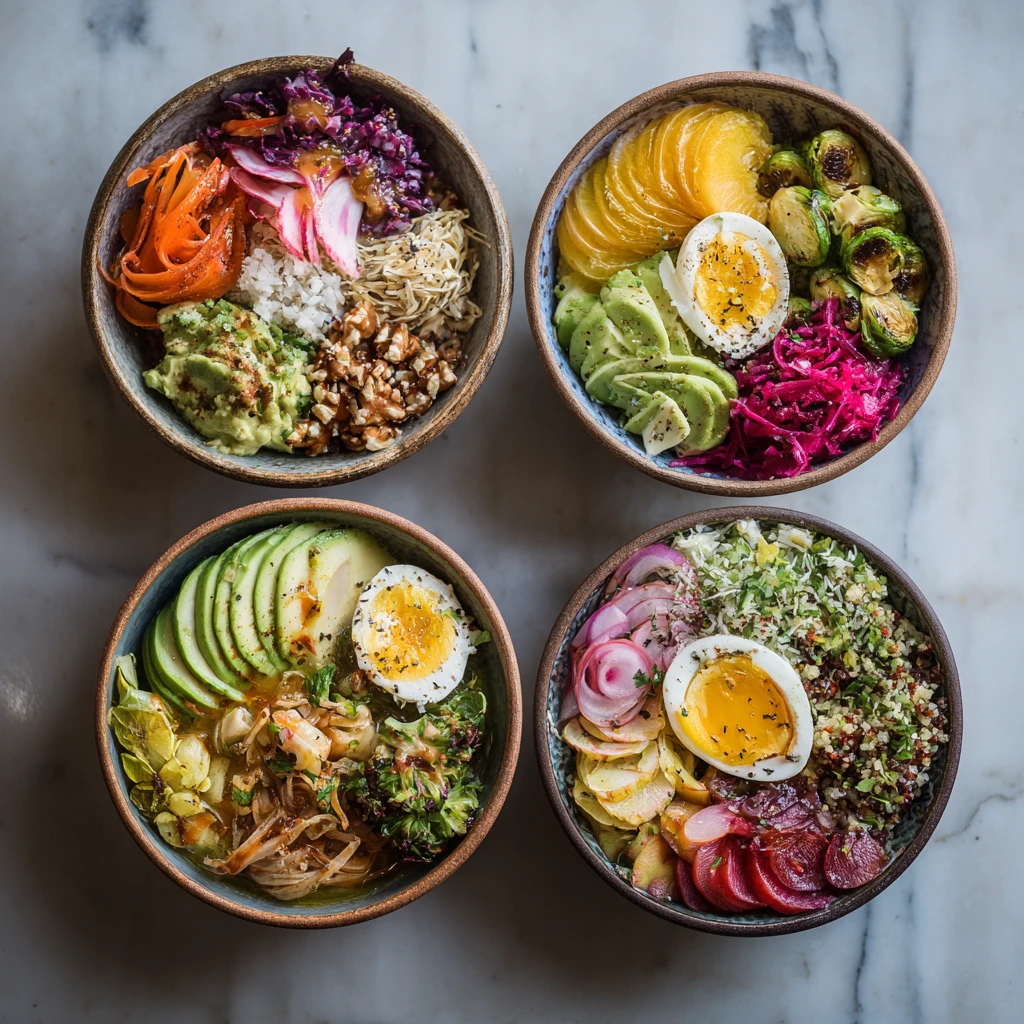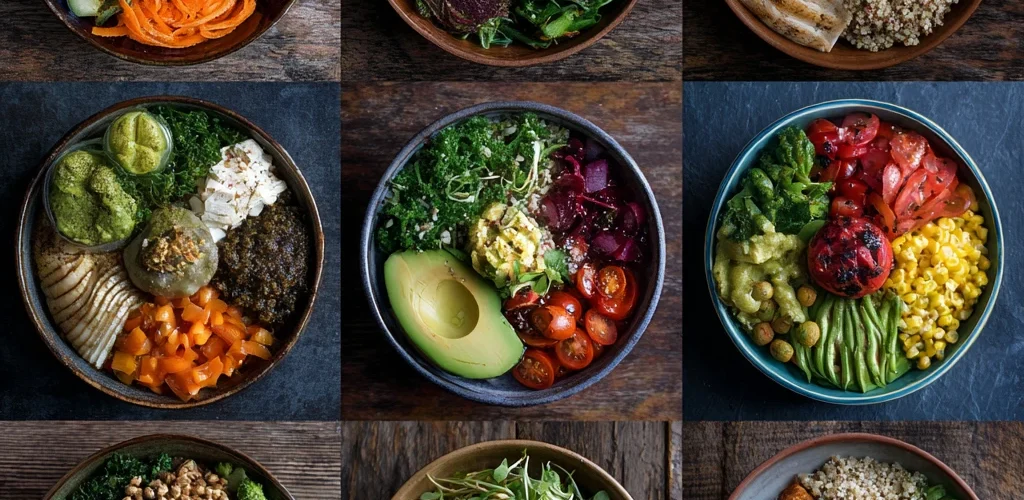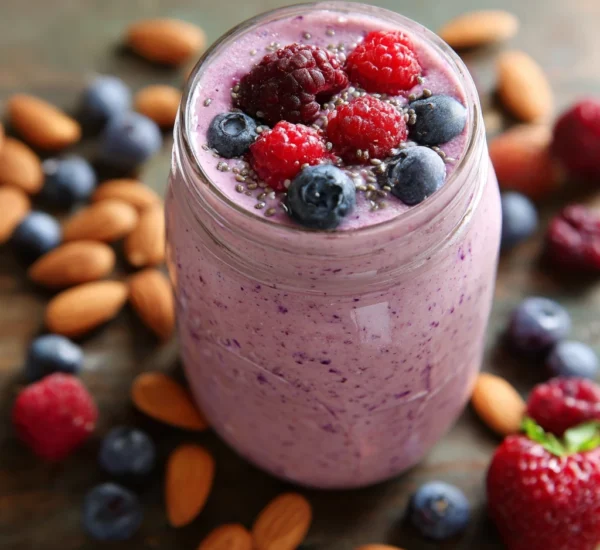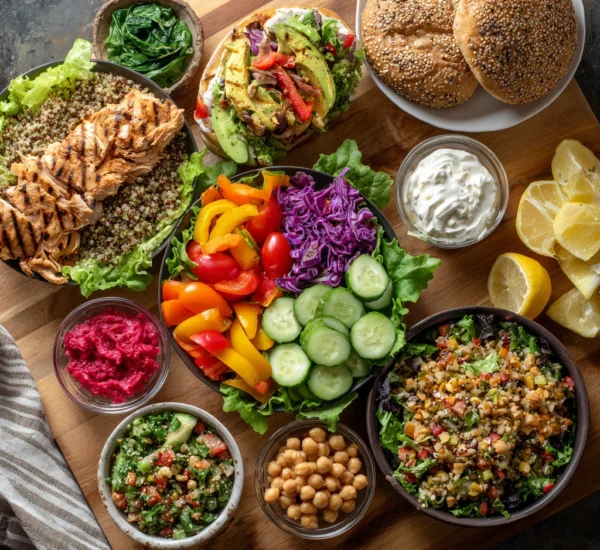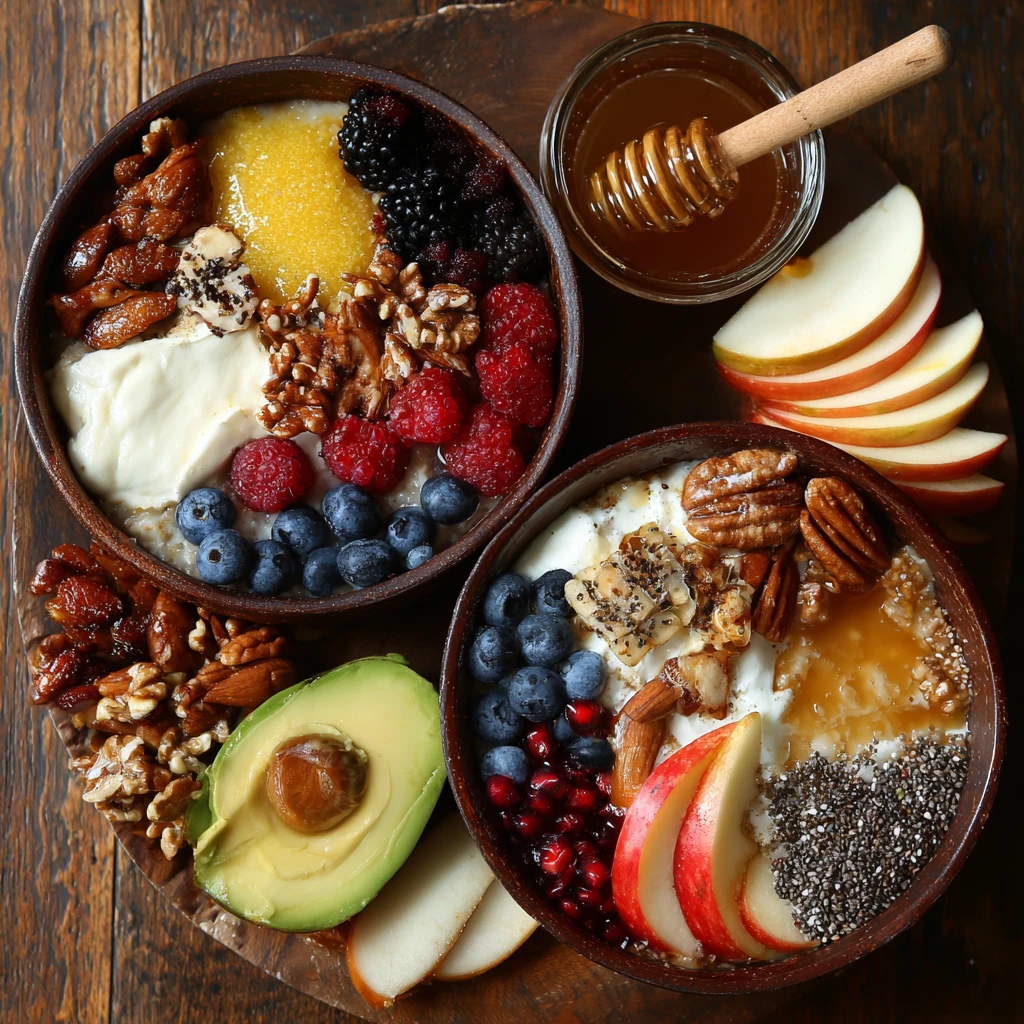Fresh Bowl Ideas for Balanced Meals: Your Guide to Nutritious and Delicious Eating
Bowls are more than just trendy food containers; they’re a fantastic way to create balanced, nutritious, and delicious meals. Their versatility allows for endless customization, catering to various dietary needs and preferences. Whether you’re a seasoned chef or a cooking novice, mastering the art of building a fresh bowl is a skill that will serve you well on your journey to healthier eating. This guide will walk you through the essentials of bowl building, offering inspiration and practical tips to help you create satisfying and nourishing meals.
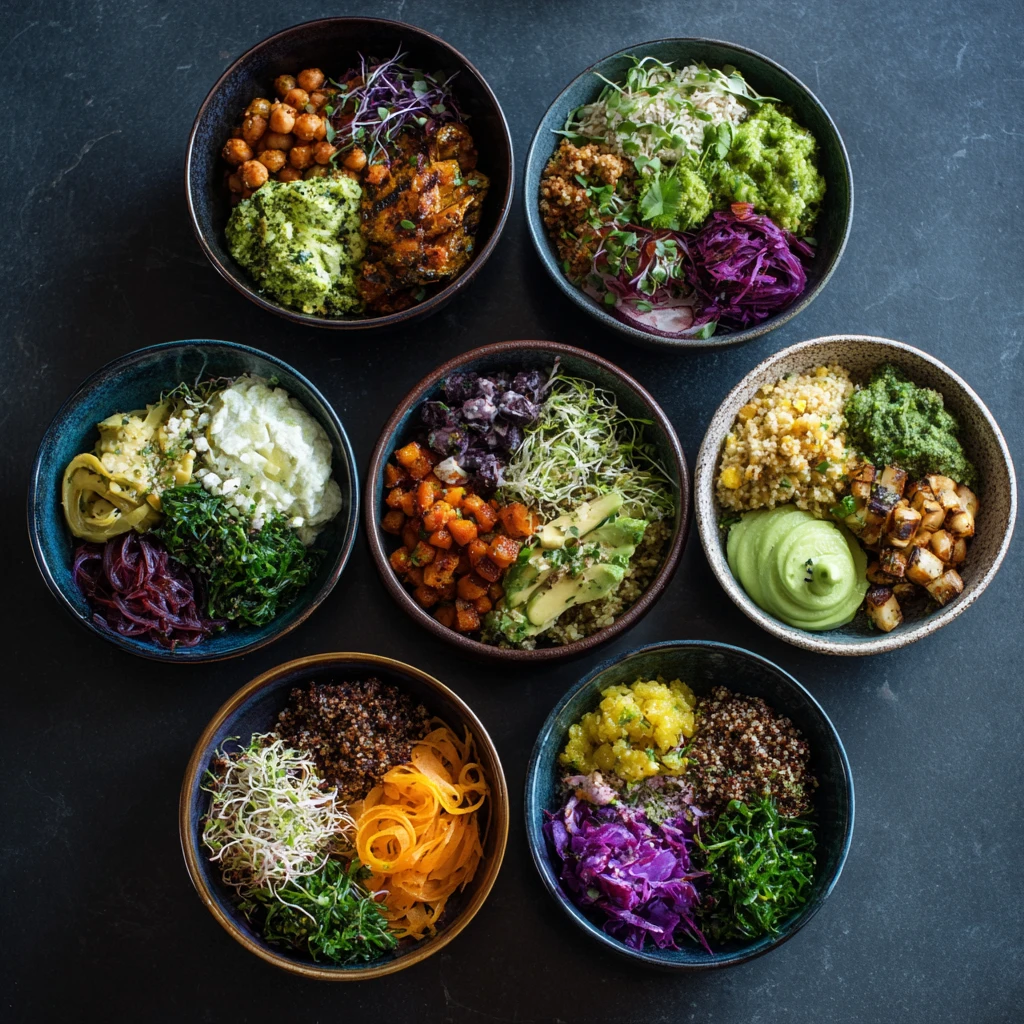
The Anatomy of a Perfect Bowl: Building Blocks for Success
A well-constructed bowl offers a harmonious blend of textures, flavors, and nutrients. Understanding the core components is key to crafting bowls that are both delicious and beneficial for your health.
- Base: The foundation of your bowl, typically a grain or leafy green, provides essential fiber and carbohydrates. Options include quinoa, brown rice, farro, couscous, leafy greens like spinach, kale, or mixed greens.
- Protein: Protein is crucial for satiety, muscle repair, and overall health. Good sources include grilled chicken or fish, tofu, tempeh, beans, lentils, chickpeas, and eggs.
- Vegetables: Load up on a variety of colorful vegetables for vitamins, minerals, and antioxidants. Consider roasted vegetables like sweet potatoes, broccoli, and Brussels sprouts, or fresh options like bell peppers, cucumbers, tomatoes, and avocado.
- Healthy Fats: Healthy fats are important for brain function, hormone production, and nutrient absorption. Add avocado, nuts, seeds, olive oil-based dressings, or tahini.
- Flavor Boosters: These elements add depth and complexity to your bowl. Fresh herbs like cilantro, parsley, or mint, spices like turmeric, cumin, or chili powder, and sauces like lemon-tahini dressing or sriracha can elevate your bowl to the next level.
Delicious and Nutritious Bowl Recipes for Every Palate
Here are some inspiring bowl recipes to get you started, showcasing the versatility and deliciousness of bowl-based meals:
Mediterranean Quinoa Bowl
This bowl is packed with flavor and nutrients, inspired by the vibrant cuisine of the Mediterranean.
- Base: Quinoa
- Protein: Grilled chicken or chickpeas
- Vegetables: Cucumber, tomato, red onion, Kalamata olives, bell peppers
- Healthy Fats: Feta cheese (optional), olive oil dressing
- Flavor Boosters: Fresh parsley, lemon juice, oregano
Southwest Black Bean Bowl
This hearty and flavorful bowl is perfect for a satisfying lunch or dinner.
- Base: Brown rice
- Protein: Black beans
- Vegetables: Corn, bell peppers, avocado, cherry tomatoes, red onion
- Healthy Fats: Avocado, shredded cheese (optional)
- Flavor Boosters: Salsa, cilantro, lime juice, a dollop of Greek yogurt or sour cream
Asian-Inspired Tofu Bowl
This bowl features the vibrant flavors of Asia with a healthy dose of plant-based protein.
- Base: Brown rice or soba noodles
- Protein: Tofu (pan-fried or baked)
- Vegetables: Broccoli, carrots, edamame, shredded cabbage, bean sprouts
- Healthy Fats: Sesame oil, avocado
- Flavor Boosters: Soy sauce, ginger, garlic, sriracha, sesame seeds
Rainbow Veggie and Hummus Bowl
A colorful and plant-powered bowl celebrating the abundance of fresh vegetables.
- Base: Mixed greens
- Protein: Hummus, chickpeas
- Vegetables: Roasted sweet potatoes, beets, carrots, cucumbers, bell peppers
- Healthy Fats: Avocado, tahini dressing
- Flavor Boosters: Lemon juice, fresh herbs
Salmon and Avocado Power Bowl
This bowl offers a boost of omega-3 fatty acids and healthy fats for sustained energy.
- Base: Quinoa or brown rice
- Protein: Baked or grilled salmon
- Vegetables: Avocado, spinach, cherry tomatoes, cucumber
- Healthy Fats: Avocado, olive oil dressing
- Flavor Boosters: Lemon juice, everything bagel seasoning
Tips and Tricks for Bowl Building Success
Creating balanced and delicious bowls is easy with a few simple strategies:
- Meal Prep: Prepare your base grains, proteins, and vegetables in advance to streamline your bowl-building process during the week.
- Embrace Variety: Don't be afraid to experiment with different ingredients and flavor combinations.
- Consider Dietary Needs: Adapt your bowl ingredients to accommodate any dietary restrictions or preferences, such as gluten-free, vegan, or vegetarian.
- Proper Portioning: Be mindful of portion sizes to ensure a balanced and healthy meal.
- Layering is Key: Start with the base, then add protein, vegetables, healthy fats, and finally, flavor boosters. This layering technique helps to distribute flavors evenly.
- Seasoning: Don't underestimate the power of seasoning. Salt, pepper, and your favorite herbs and spices can make a big difference in the overall taste of your bowl.
- Dressings: Choose dressings wisely. Opt for lighter, healthier options like vinaigrettes or lemon-tahini dressing.
- Presentation Matters: A visually appealing bowl is more enticing. Arrange your ingredients artfully to make your meal even more enjoyable.
- Listen to Your Body: Pay attention to how different ingredients make you feel and adjust your bowl accordingly.
Customizing Your Bowl: Catering to Dietary Needs and Preferences
The beauty of bowl building lies in its adaptability. You can easily tailor your bowl to fit your specific dietary requirements and taste preferences.
- Gluten-Free: Choose gluten-free grains like quinoa, brown rice, or buckwheat noodles. Be sure to use gluten-free sauces and dressings.
- Vegan/Vegetarian: Load up on plant-based proteins like tofu, tempeh, beans, lentils, and chickpeas.
- Low-Carb: Opt for a base of leafy greens or cauliflower rice. Focus on protein and healthy fats while limiting carbohydrate-rich ingredients.
- High-Protein: Include generous portions of protein-rich ingredients like grilled chicken, fish, tofu, or beans.
- Budget-Friendly: Utilize affordable ingredients like beans, lentils, rice, and seasonal vegetables.
- Kid-Friendly: Create bowls with ingredients that your kids enjoy, such as shredded cheese, grilled chicken, and colorful vegetables.
- Spice Levels: Adjust the amount of spice to suit your preferences. Add a pinch of chili flakes, a dash of sriracha, or a drizzle of hot sauce for extra heat.
- Sweet and Savory: Experiment with combining sweet and savory flavors. Add fruits like berries or mango to your bowl for a touch of sweetness.
Frequently Asked Questions about Fresh Bowl Ideas
What are the benefits of eating meals in a bowl?
Eating meals in a bowl can help with portion control, promotes a balanced intake of different food groups, and encourages mindful eating. It also offers convenience and versatility.
What are some good bases for a healthy bowl?
Good bases include quinoa, brown rice, farro, couscous, buckwheat noodles, and leafy greens like spinach, kale, or mixed greens.
What are some healthy fats to add to a bowl?
Healthy fats can come from avocado, nuts, seeds, olive oil-based dressings, tahini, and even small amounts of cheese.
What are some ways to add flavor to a bowl without adding unhealthy ingredients?
Use fresh herbs, spices, lemon juice, vinegars, and homemade dressings to add flavor without relying on unhealthy ingredients.
Can I meal prep bowls ahead of time?
Yes, meal prepping bowls is a great way to save time during the week. Prepare your base grains, proteins, and vegetables in advance and store them separately in the refrigerator. Assemble your bowls just before eating.
